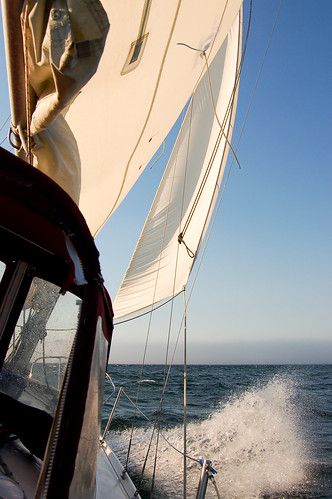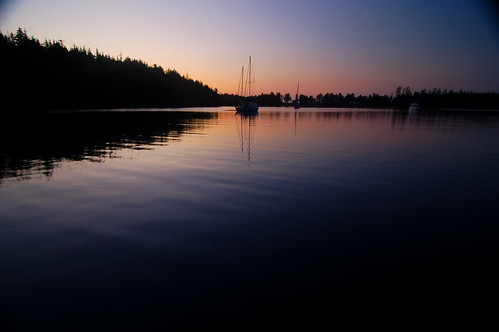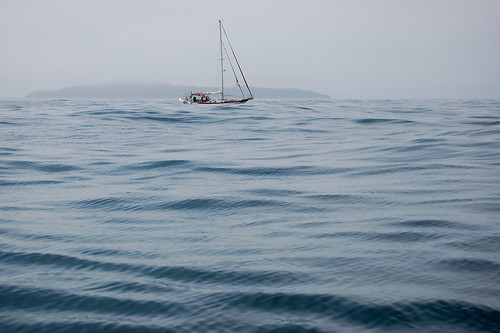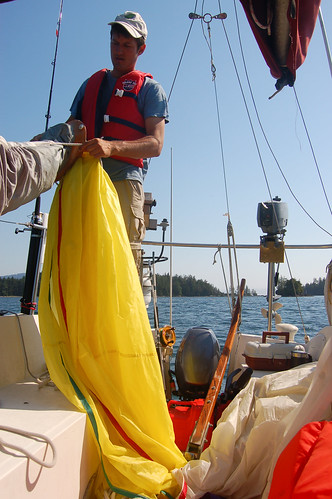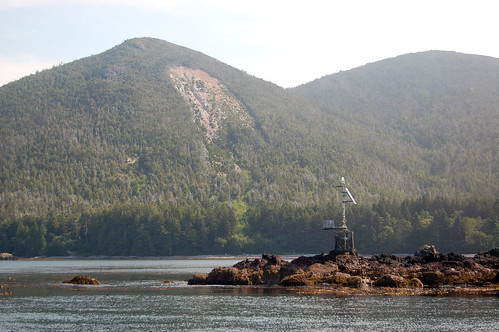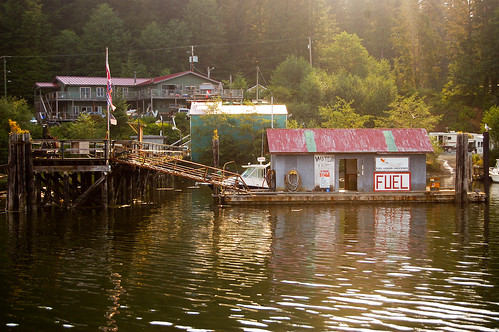Jul 27 – Aug 15 2009
I spent three weeks of my summer joining my friend Ed on a sailing trip down the West Coast of Vancouver Island, from Port Hardy to Tofino. This is an amazing coastline, with countless stretches of rugged shores, lots of sandy beaches, and interesting remote communities.
The West Coast of Vancouver Island has been described as the last rugged coast of North America. Endless stretches of sandy beaches, countless offshore rocks and reefs, and rugged shorelines. Open to the never-ending Pacific swells. Surrounded in a layer of fog. The West Coast experience.
Most people circumnavigate Vancouver Island in a counter-clockwise direction, starting from either Vancouver or Victoria, sailing up the inside passage up to Port Hardy, around Cape Scott at the north end, and then down the west coast and back home through the Juan de Fuca Strait. There’s even a biennial sailing race around Vancouver Island.
Earlier in the summer, Ed Estabrook posted on the Varsity Outdoor Club message board looking for crew. It’s always a gamble posting and looking for crew. You might get some amazing crew, but you might also get somebody whose personality doesn’t quite fit yours. And on a boat, on the open ocean, there’s not much space for conflicts. I’ve done a few sailing trips before, but the West Coast has an offshore reputation, something different than what I was used to. I wasn’t really sure about the condition of Ed’s boat either, or his sailing ability, and I was just hoping we would make it to Tofino in one piece, along with the boat.
Despite that fact that both of us were unemployed, our schedule didn’t quite work out, and I ended up joining Ed several weeks into his trip in Port Hardy. Elsa, another VOCer, also joined me in the long bus ride up. We met a motel owner from Coquitlam, who made the commute to Port McNeil (just before Port Hardy) for his two week shifts at his motel there. Now that’s a long commute.
We met Ed in Port Hardy and stocked up with food from Overwaitea. Fresh vegetables, pasta, rice, bacon, sausages, cheese. We only had a small icebox onboard, and the food only lasted as long as there was ice, which would be about 4-5 days unless we found some more. That wouldn’t always be the case. Some things last forever, like rice and pasta. And other things, like yams, potatos, carrots, melons also keep well. Later during a point of low provisions, we made a carrot and potato curry. The staff here are used to people purchasing large amounts of food. At the checkout they’re ready to box it up, and even provide a free taxi service to your boat. Turns out the several hundred that we spent was on the lower end of what they normally see from other boaters and fishermen.
The next morning after doing a much needed liquor run, we left Port Hardy at 1:00pm. The journey up Goletas Channel would take most of the afternoon and into the late evening, fighting against both a head current and light to strong winds. Of course it was foggy too. Eventually we gave up on sailing and switched the motor on, in hopes of reaching Bull Harbour before dark.
Sailing up Goletas channel with a furled jib sail and reefed mainsail. This was when the winds were still strong.
Sunset at Bull Harbour. The other boats were also preparing to round Cape Scott the next morning on their journey down the West Coast.
We rounded Cape Scott the next morning. We woke up early in order to cross Nahwitti Bar at slack tide. It was fairly anticlimatic, with nothing more than some low swells. The bar is notorious for having rip-tide conditions, where the wind and current oppose each other over this shallow section of wave, forming large standing waves that can be impassable to small crafts like ours.
Fellow sailboat and Cape Scott in the background. The winds would build in the afternoon, but speed was the priority so we continued motoring until the winds strengthen.
The rounding of Cape Scott went smoothly, but we had a near-disaster when we flew the gennaker on the run down to Sea Otter Cove. We were cruising along at 7 knots, surfing the swells, perfect. But soon the winds increased to 15-20 knots, and we were a bit shorthanded and inexperienced to handle the big sail in these conditions. We were getting really close to shore, and I finally convinced Ed to gybe. I’m not completely sure what happened, but the gennaker wrapped around the forestay several times as we changed course. The sheet and guy line were also attached to the sail using climbing caribiners, and I think these clipped themselves to each other, making the problem worse than normal. I was up on the foredeck, one eye looking at the sail desperately trying to untangle it, and the other eye looking at the lee shore. Ed later told me that we reached the 9m contour while I was up there battling it. We switched spots, I went back to steer the point several miles off our desired course, towards Japan, while Ed yelled and cursed at the sail trying to get it down. The sail has a sock which it slides into, but those lines were caught too and we ended up dousing the whole sail into the forward hatch.
Entrance to Sea Otter Cove. A welcomed relief from the open Pacific. The landslide is on Mount St. Patrick.
The next day of sailing was great! We didn’t mess around with the gennaker again, and instead chose to just sail wing on wing, with the jib set to the other side using the spinnaker pole. This makes steering easy, especially with a gybe-preventer set on the mainsail, but it’s not the most comfortable point of sail in the moderate swells.
The fuel dock at Winter Harbour. The first community encountered on the West Coast after Port Hardy. Public docks are available to moor at, but we didn’t feel like paying for moorage (usually $0.75 per foot), so we motored over to nearby Browning Inlet to drop the anchor. The weather seemed a bit unsettled, and we heard sounds of distant thunder. I was hoping to see St Elmo’s fire, but no luck.
